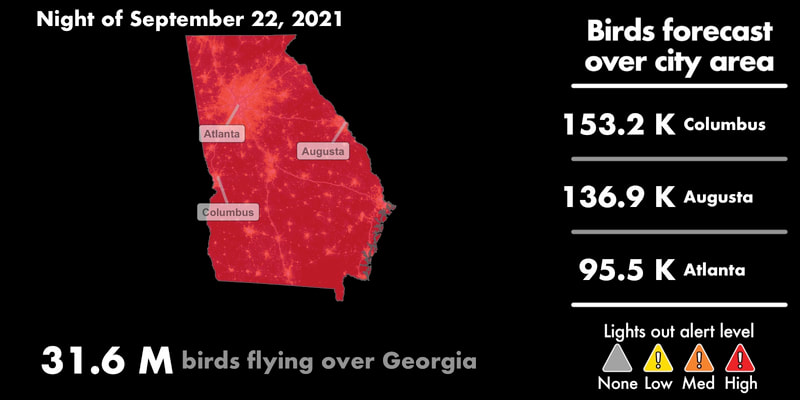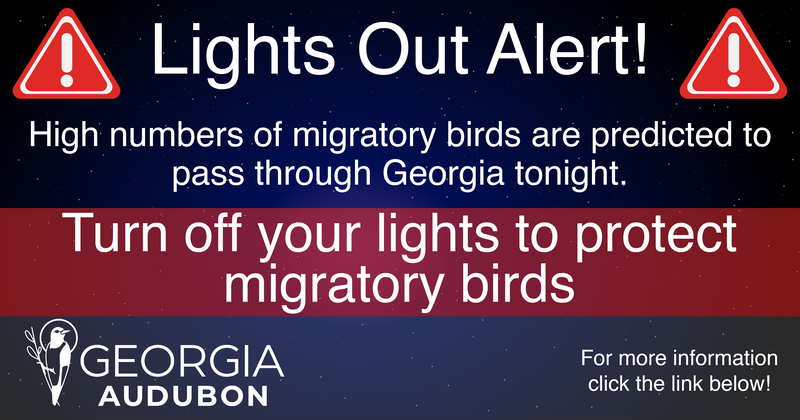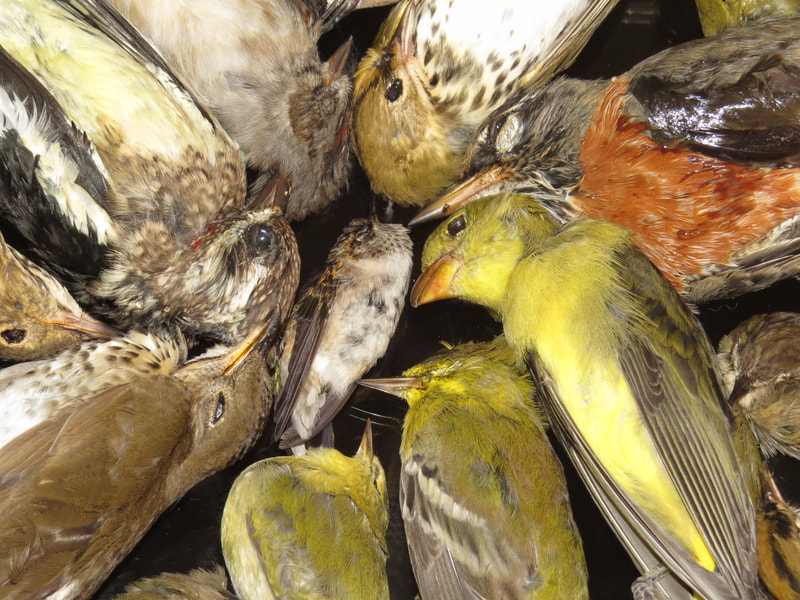New Tool Allows Georgia Audubon to FOrecast, Issue Alerts on Nights of High Bird Migration9/22/2021 by Dottie Head, Director of Communications
Georgia Audubon has a new tool to help minimize bird collisions with buildings and to alert the public to dim the lights on nights of high bird migration. Thanks to a collaborative venture between Georgia Audubon and Dr. Kyle Horton at Colorado State University, it is now possible to predict nightly bird migration over the state. Georgia Audubon has begun issuing Lights Out Alerts on nights of elevated migration intensity. This work was funded through a generous grant from the Disney Conservation Fund. Atlanta is a dangerous place for migrating birds, ranking as the 4th most dangerous city during fall migration and 9th in spring for light exposure to migratory birds, according to a 2019 study by the Cornell Lab of Ornithology. With an estimated 250 million birds passing over Georgia during spring and 675 million birds migrating over in the fall, it is vital to learn about migration over our state and make our cities safer. The forecast map shows both the relative scale of migration intensity across the state as well as pinpointing specific areas of intense bird movement. The map has a three-level classification (low, medium, and high migration). Over 80% of all migratory species in Georgia are affected by light pollution. “We are very excited about this new forecasting ability to alert the public on nights when large numbers of birds will be traveling over the area” says Adam Betuel, Georgia Audubon’s director of conservation. “For many people, turning out the lights every night for weeks at a time is impractical, but reducing or eliminating outdoor lighting for a few nights a year is totally reasonable. Migration lasts many weeks, but during each migratory period, over 50% of all migration movement occurs on roughly 10% of the nights. The ability to forecast these nights a few days in advance and alert the public to turn out the lights can save many thousands of birds each migratory period.” Each year, an estimated 365 million to 1 billion birds die in the U.S. after colliding with buildings. Most migrating birds pass through Georgia during the nighttime hours, when skies are generally calmer, predators are less active, and temperatures are cooler. Large, brightly lit cities wreak havoc on migratory birds as the ever-present glow of artificial light turns the normally safe nighttime sky into a perilous pathway. Bright lights confuse and disorient resident and migrating birds as they pass over brightly lit cities causing birds to collide with structures or become trapped in beams of light where they circle until they are exhausted. Once on the ground, brightly lit building lobbies, reflective glass showing trees and shrubs, transparent facades, or even indoor plants near windows can lead to more collisions. "We’re thrilled to be collaborating with Georgia Audubon. Light pollution is a national threat to migratory birds, but it’s clear that partnerships within communities are essential to make conservation action a reality,” says Kyle Horton, Ph.D. and assistant professor at Colorado State University. In an effort to reduce the number of bird-building collisions, Georgia Audubon launched Lights Out Georgia in spring 2017. A voluntary program, Lights Out Georgia encourages business owners, building managers, and residents to turn off or reduce lighting from midnight to dawn during peak bird migration periods. Participants pledge to reduce non-essential lighting during peak migration periods of March 15 to May 31 (spring) and August 15 to November 15 (fall). The pledge is available on the Georgia Audubon website at https://www.georgiaaudubon.org/lights-out-georgia.html. During its 25th anniversary year, the Disney Conservation Fund (DCF) is proud to continue providing critical support to community-led conservation efforts globally. The fund has been supporting local efforts around the world aimed at saving wildlife, inspiring action and protecting the planet with more than $100 million distributed to nonprofit organizations since 1995. DCF grant recipients are selected based on their efforts to implement comprehensive community wildlife conservation programs, stabilize and increase populations of at-risk animals and engage communities in conservation in critical ecosystems around the world. For information on Disney’s commitment to conserve nature and a complete list of grant recipients, visit www.disney.com/conservation. About Georgia Audubon: Georgia Audubon is building places where birds and people thrive. We create bird-friendly communities through conservation, education, and community engagement.
0 Comments
|
AuthorBirds Georgia is building places where birds and people thrive. Archives
April 2024
Categories |




 RSS Feed
RSS Feed

